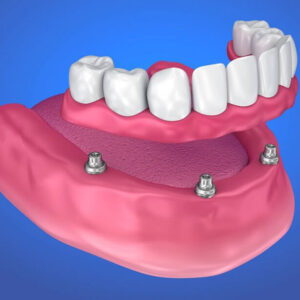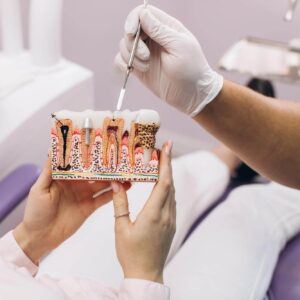The foods we eat shape far more than our overall health. They also influence how our teeth, gums, and jawbone develop and function. Over time, human diets have shifted from firm, fibrous, and naturally tough foods to meals that are softer, processed, and easier to chew. This change may seem small, but it has transformed oral health patterns across generations. For many patients seeking preventative dentistry in Peoria and across the state, understanding the relationship between food texture and dental wellness is becoming an important part of long-term health planning.
We explore how changes in food texture are affecting oral health today and why this evolution matters deeply to modern preventative dentistry in Arizona.
How Human Diets Have Shifted Through History
To understand how food texture impacts dental wellness, it helps to look at how human diets have changed over centuries.
Ancient Diets Encouraged Stronger Teeth and Jaws
Early humans consumed mostly raw plants, fibrous roots, dried meats, nuts, seeds, and other tough-textured foods. These required extensive chewing, which strengthened jaw muscles and encouraged proper tooth development.
Foods that required active chewing created natural dental benefits such as
- Stronger jawbone density
- Wider dental arches
- Less crowding of teeth
- Naturally reduced plaque due to self-cleaning action
Modern Diets Are Softer and More Processed
Today, the average diet includes more cooked foods, processed textures, baked goods, smoothies, refined carbohydrates, and packaged snacks. While these foods are convenient and enjoyable, the reduced chewing effort has changed how the mouth develops and functions.
This shift plays a major role in modern oral health concerns addressed through preventative dentistry in Arizona.
How Softer Foods Impact Jaw and Tooth Development
When children grow up eating mostly soft foods, their developing oral structures receive less stimulation. This affects the entire mouth.
Weaker Jaw Development
Chewing tough foods sends pressure signals to the jawbone that promote growth and density. Without this stimulation, the jaw may not fully develop. Over time, this can lead to:
- Narrow dental arches
- Smaller jawbone structure
- Misalignment of teeth
- Higher risk of overcrowding
Dentists offering preventative dentistry in Peoria often observe that young patients with soft food-heavy diets experience these issues earlier than previous generations.
Increased Risk of Misalignment
When the jaw is not wide or strong enough, the teeth have less room to erupt properly. This can lead to crooked teeth, overbites, or underbites. Poor alignment increases the risk of cavities, gum inflammation, and tooth wear.
Modern orthodontic problems are often linked to dietary texture changes rather than genetics alone.
How Food Texture Influences Oral Hygiene and Disease Risk
Food texture affects more than just bone and tooth development. It also affects how clean or dirty the mouth remains after eating.
Soft Foods Promote Plaque Buildup
Soft and sticky foods cling easily to tooth surfaces. These foods include:
- Bread
- Pasta
- Candy
- Chips
- Processed snacks
- Baked desserts
Because they do not require intense chewing, they do not stimulate saliva production as effectively. Saliva is a natural cleaner that washes away food debris and reduces bacterial growth.
When less saliva is produced, plaque forms more quickly, increasing the risk of cavities and gum disease.
Hard and Fibrous Foods Clean Teeth Naturally
Crisp and fibrous foods such as apples, carrots, nuts, celery, and raw vegetables help clean teeth during chewing. Their firm texture removes plaque, boosts saliva, and strengthens gum tissue.
These foods help support goals commonly addressed in preventative dentistry in Arizona, such as reducing decay and maintaining gum health.
How Dietary Texture Affects the Long-Term Condition of Teeth
Food texture does not only affect development in early life. It also influences the long-term durability of adult teeth.
Tough Foods Strengthen Enamel
Chewing firmer foods can help maintain stronger enamel by providing mild friction and stimulation. This helps reinforce the tooth surface over time.
Soft Foods May Lead to Weaker Enamel
When the bite force is underused due to softer diets, enamel may not receive enough natural stimulation. Weaker enamel is more prone to:
- Sensitivity
- Acid erosion
- Cavities
- Early wear
Dentists practicing preventative dentistry in Peoria often educate patients on incorporating firmer foods to help stimulate the teeth and jaw for natural strengthening.
How Chewing Habits Influence Facial Structure
Food texture also plays a surprising role in shaping the face.
Reduced Chewing Leads to Weaker Facial Muscles
Chewing activates muscles in the cheeks, jaw, and lower face. When these muscles are underused, the face can develop:
- Narrower jawlines
- Less defined cheek structure
- Weaker bite patterns
These changes can impact not just appearance but also long-term oral function.
Stronger Chewing Supports Balanced Facial Growth
When diets include foods that require effort to chew, the face develops broader, stronger, and more balanced structures. This supports the alignment of teeth and the stability of the bite.
This connection is an important part of many treatment plans within Preventative Dentistry in Arizona.
What Modern Preventative Dentistry Recommends for Improved Oral Health
Dentists across Arizona are beginning to incorporate food texture counseling into their preventative care strategies. Here are some of the recommendations often made in offices that provide preventative dentistry in Peoria and nearby areas.
Add More Naturally Firm Foods
Patients are encouraged to include foods that promote chewing effort, such as:
- Raw vegetables
- Nuts and seeds
- Whole fruits
- Lean meats
- Whole grains
These textures help stimulate saliva, strengthen muscles, and naturally clean the teeth.
Limit Soft Processed Foods
Dentists recommend reducing:
- Sticky candies
- Soft pastries
- Gummy snacks
- White breads
- Processed cereals
These foods increase plaque buildup and reduce the natural protective effects of chewing.
Encourage Chewing on Both Sides
Balanced chewing helps maintain even strength in jaw muscles and prevent shifting.
Conclusion
Food texture influences oral development, tooth strength, muscle function, and overall dental health more than most people realize. As soft and processed foods continue to dominate modern diets, the impact on oral structure and hygiene becomes increasingly noticeable. Fortunately, the evolving field of preventative dentistry in Arizona recognizes this shift and focuses on dietary guidance alongside regular cleanings, examinations, and early detection strategies.
For patients seeking comprehensive care such as preventative dentistry in Peoria, understanding the role of chewing and food texture can help protect oral health for life. Stronger chewing habits, firmer food choices, and mindful eating patterns contribute to stronger teeth, healthier gums, and a more balanced facial structure.



